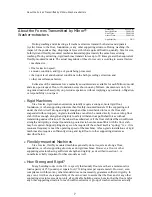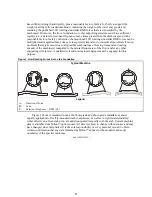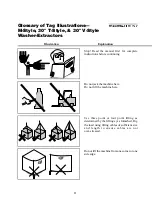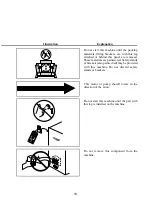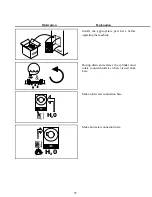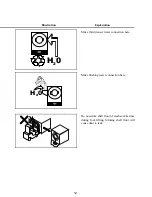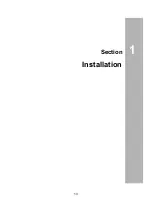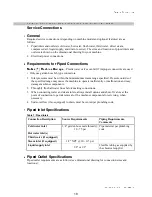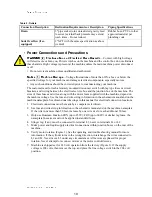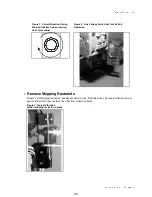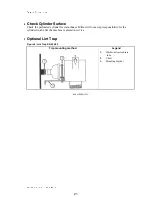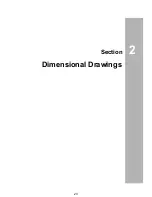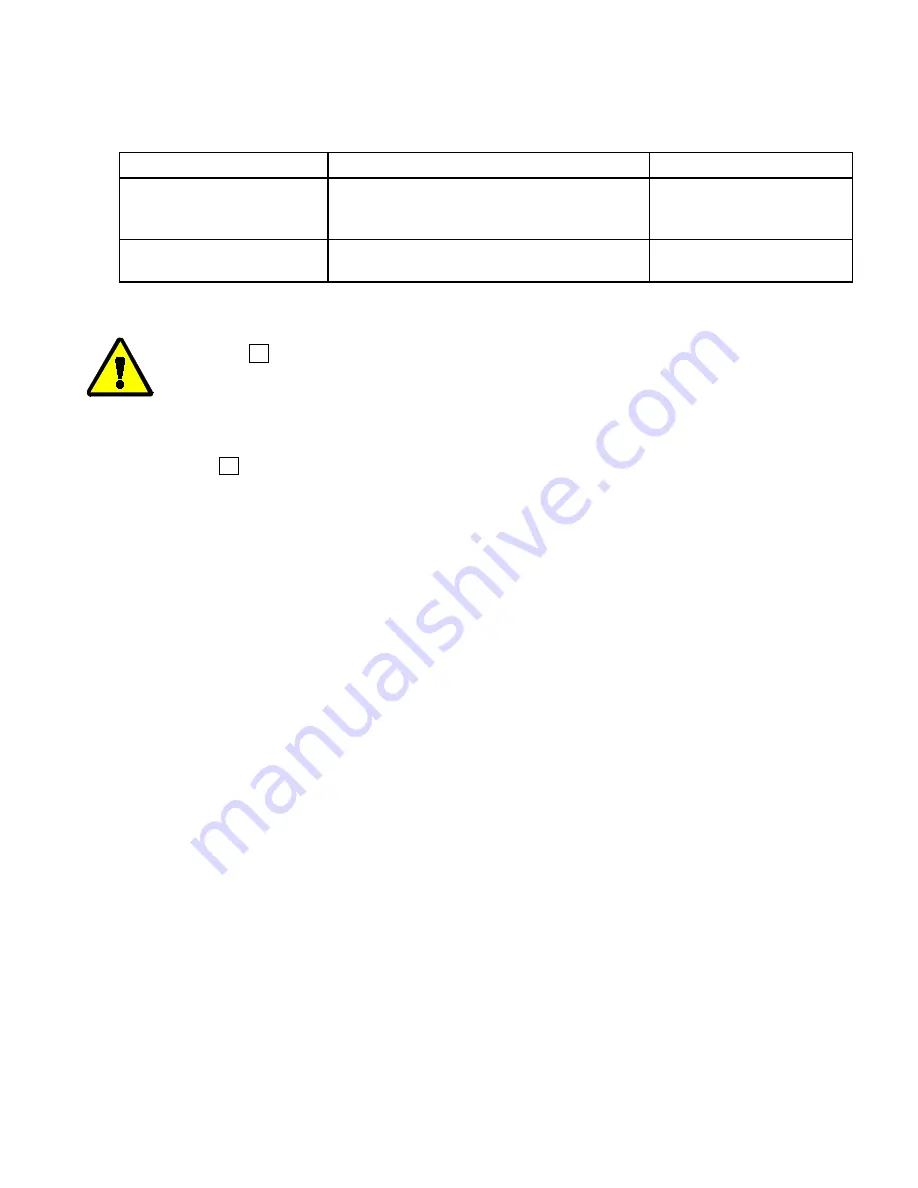
CUbfYSU 3_^^USdY_^c
@5<<5B9> =9<>?B 3?B@?B1D9?>
Table 2: Outlets
Connection Description
Destination Requirements or Description
Piping Specifications
Drain
3" pipe socket joint, unrestricted gravity feed
to sewer (external back pressure may extend
wash times - Do not reduce)
Rubber hose, PVC or other
approved material per
plumbing code
Suds Overflow (if so
equipped)
2" NPT with the same specification as above
(vented)
$
?^fTa2^]]TRcX^]bP]S?aTRPdcX^]b
F0A=8=6 ! ) 4[TRca^RdcX^] P]S 4[TRcaXRP[ 1da] 7PiPaSb—Contact with high voltage
will electrocute or burn you. Power switches on the machine and the control box do not eliminate
these hazards. High voltage is present at the machine unless the main machine power disconnect
is off.
• Do not service machine unless qualified and authorized.
=^cXRT " ) <PRWX]T 3P\PVT—Voltage fluctuations of more than 10% above or below the
specified voltage for your machine can damage electrical components, especially motors.
• Any such conditions should be corrected prior to commissioning your machine.
The customer must furnish a remotely mounted disconnect switch with lag type fuses or circuit
breakers, and wiring between the electrical service box and the junction box on the machine. The
sizes of these fuses and wires, along with the motor fuses supplied with the machine, depend on
the machine voltage. See the fuse and wire sizing information in the schematic manual and on the
machine nameplate. See dimensional drawings in this manual for electrical connection locations.
1. Electrical connections must be made by a competent electrician.
2. See fuse and wire sizing information in the schematic manual and on the machine nameplate.
If the wire runs more than 50 feet, increase by one wire size for each additional 50 feet.
3. Only use Bussman Fusatron FRN (up to 250V), FRS (up to 600V) or similar lag fuses, the
nameplate fuse sizes must not be applied to standard fuses.
4. Stinger leg, if any, must be connected to terminal L3, never to terminals L1 or L2.
5. Make power and liquid supply electrical connections within junction boxes on the rear of the
machine.
6. Verify motor rotation (Figure 1). See the operating and trouble shooting manual for more
information. If the cylinder turns in the wrong direction, interchange the wires connected to
L1 and L2. Never move L3 under any circumstances. All motors are phased for proper
rotation. Never attempt to reconnect motors or the motor control devices.
7. Machine is shipped set for 240 volt operation from the factory (Figure 2). If the supply
voltage is 208 volts, then remove the top, and place the line voltage switch in the 208 volt
position.
19
Summary of Contents for 30015
Page 4: ......
Page 6: ...2 ...
Page 17: ...Section 1 Installation 13 ...
Page 26: ...22 ...
Page 27: ...Section 2 Dimensional Drawings 23 ...
Page 28: ...24 ...
Page 29: ...25 ...
Page 30: ...26 ...
Page 31: ...27 ...
Page 32: ...28 ...
Page 33: ...29 ...
Page 34: ...30 ...
Page 35: ...31 ...
Page 36: ...32 ...
Page 37: ...33 ...
Page 38: ...34 ...
Page 39: ...35 ...



